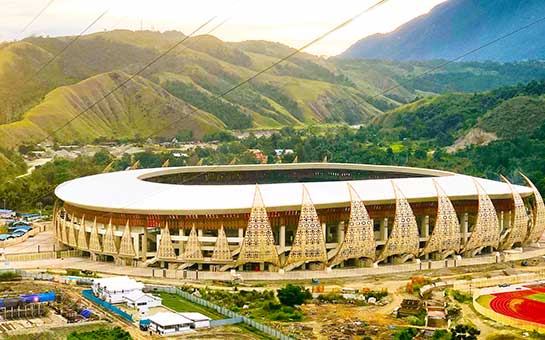Papua, also known as Western New Guinea, is the easternmost part of Indonesia. It is the world’s largest, as well as highest, tropical island.
In a world of change and modernization, Papua has managed to retain its traditional cultures and is home to some of the richest biodiversity across the globe.
Papua is the youngest part of Indonesia, but its rich tribal culture and traditions span thousands of years. While you pack to enjoy a visit to Papua, be sure to first purchase travel medical insurance as a safeguard against any illnesses, injuries, or accidents that might occur during the trip.
Papua Travel Medical Insurance for International Travelers – FAQs
Healthcare facilities are very basic in Papua. Hospitals suffer from power shortages as well as run out of medicine sometimes.
For serious medical care, patients can be medically evacuated to Australia, but the expenses will be quite high.
So, buying travel medical insurance will ensure that you enjoy your time in Papua instead of worrying about medical costs.
Do I need travel medical insurance for Papua?
No, it is not legally mandatory. However, due to the sub-standard conditions of healthcare facilities in the country, it is important that you buy travel medical insurance before you travel to Papua.
Why buy travel medical insurance for Papua?
Accidental injuries and violent crimes are possible risks when you travel to Papua.
If you buy Papua travel medical insurance, you will be able to enjoy the trip instead of worrying about events that are not in your control.
Things to Do for Travelers in Papua
Papua is located far from buzzing city life and is covered in acres of pristine rainforests, sparkling rivers, and gushing waterfalls.
Here is why booking tickets to Papua will become the best decision of your life:
- Stroll through the Goa Jepang Caves: These caves are towards the north of Kota Biak, which is one of the largest towns in Papua. It is a place of historical interest and was used as a hiding place by Japanese soldiers during World War II. The caves are connected to Parai, which is on the coast, through a 3-kilometer (about 1.9-mile) tunnel. Around 3,000 Japanese soldiers died in these caves when the U.S. military bombed the cave. The cavern created due to the bomb impact is there for all to see. A section in the cave showcases Japanese and American weapons and photographs of the cave before it was bombed.
- Hike through the Lorentz National Park: UNESCO has declared the Lorentz National Park as a World Heritage Site. It is also the largest protected area in the Asia-Pacific region. The hundreds of bird species in the park make for a delight for birdwatchers. Trekking and mountain climbing activities are also conducted in the park, but the hike is strenuous. Thus, be prepared and attempt mountain trekking only if you are used to it.
- Watch the sunrise and sunset at the Raja Ampat Island: It is an archipelago of over 1,500 islands and is one of the remotest groups of islands in the world. The sunset colors the sky in orange hues, and it is worth it to wake up early and view the sunrise. You can scuba dive, swim, or sit by a jetty and enjoy schools of fish which you can see without going out in the water. Raja Ampat Island is not only ample in exotic marine life, but it also offers wonderful scenery and encounters with wildlife. The island is home to several rare plant and bird species.
- Dive among the coral reefs in the Kaimana Island: It is a marine-protected area linked with Raja Ampat Island and the Bird’s Head Seascape. Kaimana Island is well known for some of the best diving in the world. It is located in the famous Coral Triangle, an area with more species of fish and coral than any other place on earth. This island has been famously known as the “Kingdom of Fishes” and is a favorite spot for people practicing macro-photography.
- Pulau Biak: Known for its underwater sports and museums, you can enjoy diving or be a part of birdwatching tours when you visit this island. Pulau Biak is also popular for its historical sites such as the Cenderawasih Museum. You can sail to the other side of the island to view the stunning rock formations in Urfu and Samber.
Travel Risks for International Travelers in Papua
Papua is a remote island with serene beaches and tropical forests. It is perfect for a peaceful vacation. Here are some common risks travelers may face in Papua:
- Travelers to Papua are recommended to get all the routine vaccinations and take precautions against mosquito bites in the country.
- The island conducts a plethora of water activities which may result in water-related accidents for tourists. Perform water sports under licensed agencies to stay safe.
- Take all steps to ensure your safety, such as avoiding isolated areas like beaches and particularly after dark. Keep your valuables and documents safe at all times.
- Stay away from demonstrations, and follow orders from local authorities to stay safe.
- Shady travel agencies in Papua might dupe international travelers. Hence, be cautious while you’re making bookings.
Before You Travel to Papua…
Pack lots of mosquito repellents.
Make copies of your important documents and keep them safely in your luggage.
